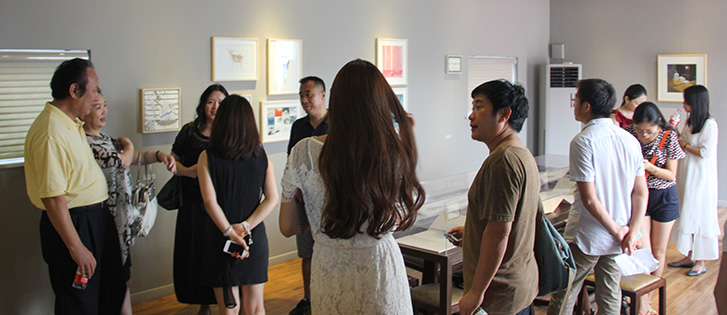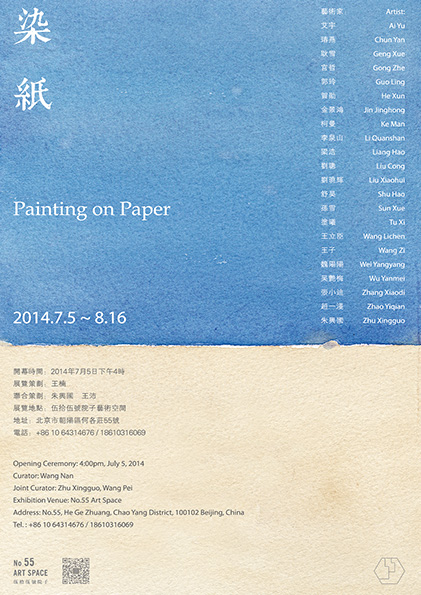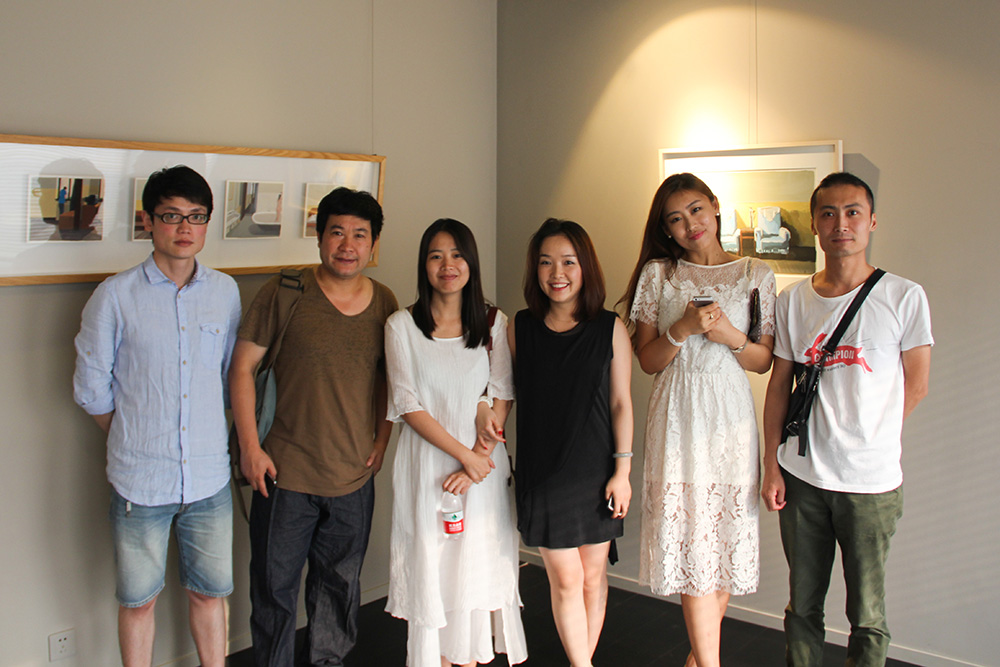
More than twenty thousand years ago, human beings carved the first mark on cliffs. Once begun, we’ve never stopped since there is no reason for us to resist the impulse for painting. It is the invention of paper that really breaks the ancient way of writing:pictures and characters are no longer limited to stay on static walls; drawings and symbols no longer only exist in heavy vessels. On papers that are blank and light, we awaken not only the world that we live in but also the whole universe through writing and painting. Having replaced the most original carrier of art, paper opens free and private dialogues between human beings and the universe. For thousands of years, in the field of art forms, this kind of ancient and traditional material is becoming an increasingly inclusive aggregation after having undergone the test of time and highly advanced civilizations. Paper is the most widely accepted carrier not only for the final presentation of various kinds of art forms such as ink painting, watercolor, sketch, and manuscripts, but also for the collection of the inspirational flashes in artists’ spiritual world. Norman Bryson believed that, the blankness of paper is a container, in which pictures emerge. This blank space is perceptible but indefinable. To paint is to make a blank paper a painting with only lines and colors. That’s where its significance lies.
There is always miracle on the paper. Nowadays, for all paintings done on the paper, it is the purity and simplicity of paper that highlight the transparency and sincerity shining in each stroke. For artists, drawing is the process of becoming themselves. In drawing sketches, they are always describing who they are through lines, but they never give the answer. The outline of watercolor is the conflicts and compromises between lines and colors. Every piece of watercolor is a perfect interaction performed by paper textures, lavish colors and the consistent penetration of water. Just as Benjamin put it: Watercolor is the only field where colors and lines are in harmony. Here, the outline drawn by the pencil is visible while the pigment is transparent. And in watercolor, the background, although having been colored, is reserved. Paper, intentionally or unintentionally, giving away the traces of artists’ struggling that they suffer when they are faced with the choices about works and materials. They have attempted to erase and to cover up, but in vain. Every piece of paper is a barren land, unbounded and unconstrained. All the inks, colors and flavors gallop here. They chase around, and they mix up. The accidental convergence of these elements on the paper is like a mirror, reflecting the exact producing process and capturing the sudden flashes of inspiration. In oil paintings, sculptures, and installed works, which are covert and complete, neither the process nor the inspiration can be perceived.
The contemporary arts that we are focusing on nowadays is more like to be built on the basis of the subversion and destruction of traditional idea on painting. The so-called creative art forms are all experiments and adjustments about the manifestations of arts without touches to the essence of it. Many non-traditional art forms such as graffiti,Land Art, and Conceptual Art, have gone beyond the boarder of painting while seeking breakthroughs with various kinds of three dimensional renderings. Depending on new medias and advanced science and technologies, these kinds of arts are attempting to dispel the essential core of arts though the logics and concepts of designing. In this age when everything can be called “art”, it’s necessary to transfer our attention back on paper. It is the artists who leave the figure of every inspirational flash to the paper before them. Working on the paper day after day, they are in fact measuring the width of their own lives with their works and each recording process can be a spiritual practice. Only by probing into individuals’ creating process and states can we reveal the inner power berried in artists.
Works of more than one dozen artists are displayed in this art exhibition, and all the artists are post-70s and post-80 generations. Some of them have made many trials in innovations of forms, but eventually regress to the initial state. Lines and colors in works, as the demonstration of painting attitudes, seem to be especially precious nowadays because they represent artists’ efforts in creating private spaces. Some may devote themselves to the vines and veins of a plant, and others remain cautious toward western art forms while reserving their respective styles of outputting their memories. By painting on the paper, artists piece together the fragments of inspirations and thus build the whole process including conceiving, collecting materials, brainstorming, and continuous verifying. So, visitors and even each of us are eager to find out the most original power and drive behind the works. As for the way to exhibit each work, we have broken the traditional practice of hanging on the wall and make the installation flexible. The display of works is personalized according to their styles so as to promote spiritual communication between the dynamic paper and the audience. At this moment, their works go back to the origin and the purity, endowing them with the ability to speak, reminding us repeatedly of “art for art’s sake” and “art for artists’ sake”. This is a different kind of freedom on the paper that art gives.
Artist is the most lasting engine for art. If this exhibition, Paper Experiences, can serve as an epitome of young artists’ works on paper to show the exact creation process and to explain the current structure of the diverse works, the significance of the exhibition will be achieved. We hope to capture the traces of inspiration to keep them floating in the air, echoing around ears and eventually falling into the hearts of every audience. I also hope this exhibition can be an ashram for artists to express in peace their free inspirations on paper. In this rapidly rotating age when the whole world is dominated by the convenience of telecommunication, if visitors can still be touched by one stroke,if not many, on the simple and ordinary paper in this exhibition, all the efforts we have done will be justified.
Artists:
Ai Yu,Chun Yan,Geng Xue,Gong Zhe,Guo Ling,He Xun,Jing Jinghong,Ke Man,Li Quanshan,Liang Hao,Liu Cong,Liu Xiaohui,Shu Hao,Sun Xue,Tu Xi,Wang Lichen,Wang Zi,Wei Yangyang,Wu Yanmei,Zhang Xiaodi,Zhao Yiqian,Zhu Xingguo








































